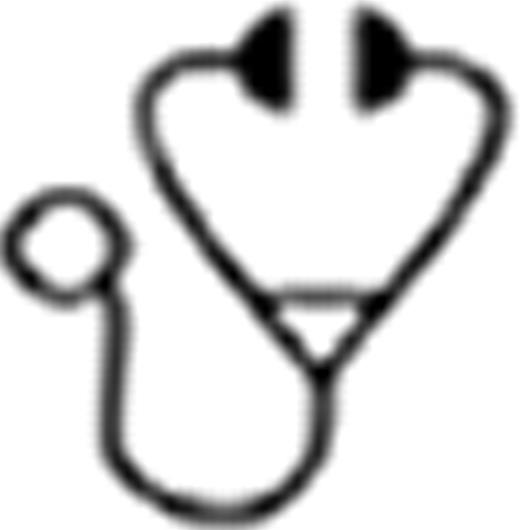Abstract
The outcome in pediatric patients with relapse-refractory acute leukemia (acute lymphoblastic leukemia (ALL) and acute myeloid leukemia (AML)) is very poor. Clofarabine is an active agent in this high risk group.
Report the GATLA experience in patients with relapse-refractory acute leukemia treated with clofarabine based regimens.
Between June 07 and April 12, 66 patients from 15 GATLA centers were enrolled. 61 ALL (52 B/9 T): 23 first relapse (20 BM, 1 CNS, 2 combined), 33 second relapse (28 BM, 1 CNS, 4 combined), 5 with refractory disease. 5 AML (4 first relapse, 1 refractory disease). Median age 10,5 years (1–20 ys). Gender: 44 boys and 22 girls.
60 patients received chemotherapy combined clofarabine-etoposide-cyclophosphamide (CLO 218), 4 patients received clofarabine plus ara-c therapy and 2 patients were treated with clofarabine alone (52mg/m2).
63.7% (42/66) of the patients were treated with 2 therapeutic lines prior to clofarabine regimens, 22.7% (15/66) received only 1 prior treatment, 13.6% (9/66) got 3 or more therapies and 5 patients undergone prior HSCT (Hematopoietic Stem Cell Transplantation).
Complete remission (CR) was achieved in: 36/66 patients (54,5 %). Early toxic death rate was 7/66 (10,6%). No response occurred in 22/66 (33,3%) patients. 1 patient is on induction, not evaluable at the moment.
Of the 36 responders, 19 patients (52,7 %) proceeded to HSCT: 6 (31,5 %) remain alive post-transplantation with a median follow up of 55 weeks ( range 6–156 w), HSCT related death: 7 (37 %), relapse after HSCT: 6 (31,5%) at a mean of 20 weeks( range 8–56 weeks).
Among the 61 ALL patients, 18/23 (78%) in first relapse achieved CR, 12/18 (66,6%) needed only one course to achieved CR, of them, 3/12 (25%) relapsed at 8, 8 and 14 weeks and died for progressive disease. 1/12 (8,3%) died in CR at week 8. 2/12 (16,6%) patients are on treatment. 6/12 (50%) proceeded to HSCT: 1/6 relapsed 56 weeks after. 3/6 patients died in CR after HSCT at 12, 15 and 24 weeks. 2/6 remain in CR at 6 weeks follow up. 6/18 (33,3%) of the patients in first relapse needed 2 courses to achieved CR. 1/6 (16,7%) relapsed at week 8. 2/6(33,3%) died in CR at week 9 and 16. 3/6 ( 50%) proceeded to HSCT, 1 is alive at 36 weeks, 1 relapsed at week 26 and 1 died in CR at week 14.
13/33 (39%) ALL patients in second relapse achieved CR and 8/13 (61,5%) needed only one course to CR. 3/8 (37,5%) relapsed at 6,8 and 16 weeks and died for progressive disease. 5/8(62,5%) proceeded to HSCT, of them 3 (60%) relapsed after HSCT at 8,8 and 12 weeks. 1/5 (20%) is alive and disease free at 6 weeks after HSCT. 1/5 (20%) died in CR. 5/13 (38%) needed 2 courses to achieved CR, 1/5 relapsed after 4 weeks. 1/5 died in CR at week 6, 1/5 is alive 40 weeks after CR. 2/5 proceeded to HSCT and died in CR at 10 and 22 weeks after HSCT.
2/5 ALL patients with refractory disease achieved CR with 2 and 3 courses of clofarabine, one proceeded to HSCT and is alive with a follow up of 156 weeks, the other relapsed at 8 weeks. 3/5 did not response and died.
AML patients: 3/5 received clofarabine as 3rd therapeutic line: 1 patient achieved CR after one course but died of toxicity, 1 patient did not response and 1 died during induction. 2/5 received clofarabine as 2ndline ( 1 with refractory disease and 1 who undergone prior HSCT), they achieved CR with 2 courses of chemotherapy and proceeded to HSCT, one relapsed after 16 weeks and the other is alive and disease free after 120 weeks.
In our series, Clofarabine was well tolerated and shows significant antileukemic activity in heavily pretreated children. The response rate and the durability of remission observed is better when clofarabine regimens are used earlier (first relapse). Responses allowed several refractory patients to proceed to HSCT. Levels of pre transplant MRD (Minimal Residual Disease)should be taken into account in order to follow this procedure.
No relevant conflicts of interest to declare.

This icon denotes a clinically relevant abstract
Author notes
Asterisk with author names denotes non-ASH members.

This feature is available to Subscribers Only
Sign In or Create an Account Close Modal